Taiwan and Montana can both benefit from deeper partnerships in key industries, President Tsai Ing-wen (蔡英文) yesterday told Montana Governor Greg Gianforte, who expressed optimism regarding cooperation between his state and Taiwan.
Gianforte, who is leading an economic and trade delegation to Taiwan for six days ending on Friday, met with Tsai at the Presidential Office.
Tsai thanked him for reopening the State of Montana Asia Trade Office in Taiwan after becoming governor in 2021, saying it was a concrete move that helped the two sides continue to reinforce bilateral economic and trade cooperation.
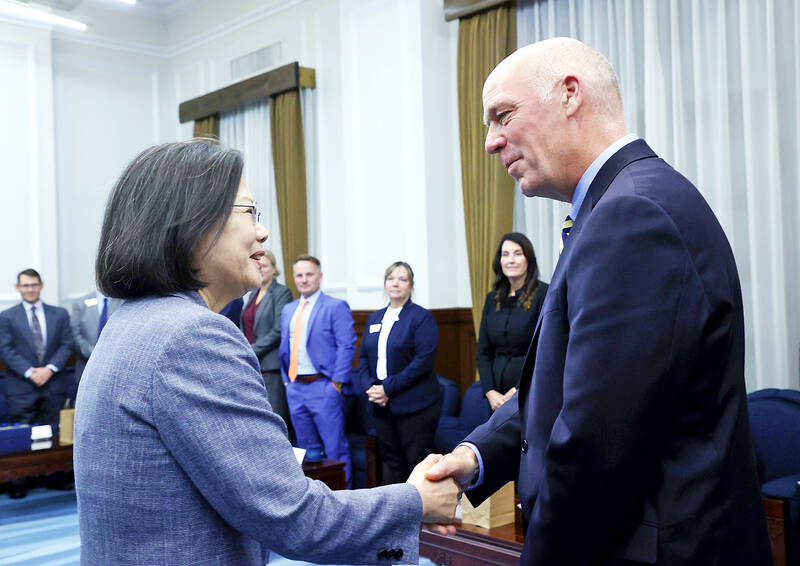
Photo: CNA
Taiwan and Montana have long enjoyed close cooperation in agriculture and tourism, as large numbers of Taiwanese tourists visit the state every year and agricultural goods from Montana are popular among Taiwanese consumers, she said.
Montana is known for its auto electronics and photonics industries, and is developing its biotechnology, cloud computing and aerospace industries, Tsai said.
Gianforte’s efforts in promoting tax incentives and deregulation have created job opportunities and stimulated investment, she said.
As Montana’s seventh-largest trade partner, Taiwan hopes to deepen partnerships in key areas such as auto electronics, photonics and semiconductors, she said.
Tsai also thanked the Montana Senate and House of Representatives for passing Taiwan-friendly resolutions in support of the nation’s international participation.
Gianforte said that the state legislature passes resolutions in support of Taiwan every two years to “reinforce” its ties with the nation.
Montana “has shared a strong bond with Taiwan” since they established a sister-state relationship in 1985, he said.
“It’s only fitting that I lead my first international trade mission as governor to this great country” two years after the reopening of its trade office in Taipei, Gianforte said.
Ties between the two sides have been growing stronger through bilateral trade and educational exchanges, and because of their shared values of freedom and free enterprise, he said.
Montana has great scenery and quality beef and wheat, Gianforte said, adding that a delegation of Taiwanese flour milling industry representatives visited the state earlier this year.
The relationship between Montana and Taiwan has developed beyond trade in agricultural products, and is rapidly growing in other areas such as education, bioscience and photonics, he said.
In cooperation with the Ministry of Foreign Affairs and the Ministry of Education, a Mandarin program for high-school and college students is to be launched at the University of Montana’s Mansfield Center next year, Gianforte said.
With support from the ministries, Montana Technological University and Taiwan’s Minghsin University of Science and Technology are to offer short-term exchange programs to nurture semiconductor talent, he said.
Considering the photonics industry’s importance and potential in the 21st century, “it is imperative that we work to build this industry for our state, and Taiwan is a key partner in this,” Gianforte said.
The delegation is to sign a memorandum of understanding with the Taiwan-USA Industrial Cooperation Promotion Office and Taiwan’s Photonics Industry and Technology Development Association to facilitate the cooperation, he added.
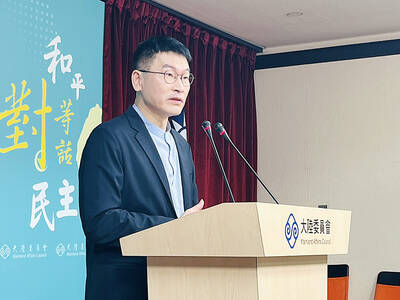
LOW RISK: Most nations do not extradite people accused of political crimes, and the UN says extradition can only happen if the act is a crime in both countries, an official said China yesterday issued wanted notices for two Taiwanese influencers, accusing them of committing “separatist acts” by criticizing Beijing, amid broadening concerns over China’s state-directed transnational repression. The Quanzhou Public Security Bureau in a notice posted online said police are offering a reward of up to 25,000 yuan (US$3,523) for information that could contribute to the investigation or apprehension of pro-Taiwanese independence YouTuber Wen Tzu-yu (溫子渝),who is known as Pa Chiung (八炯) online, and rapper Chen Po-yuan (陳柏源). Wen and Chen are suspected of spreading content that supported secession from China, slandered Chinese policies that benefit Taiwanese and discrimination against Chinese spouses of
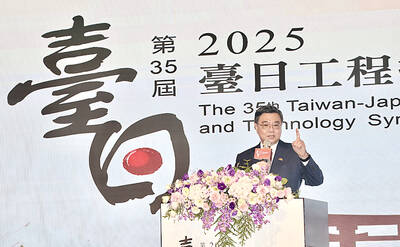
ALIGNED THINKING: Taiwan and Japan have a mutual interest in trade, culture and engineering, and can work together for stability, Cho Jung-tai said Taiwan and Japan are two like-minded countries willing to work together to form a “safety barrier” in the Indo-Pacific region, Premier Cho Jung-tai (卓榮泰) yesterday said at the opening ceremony of the 35th Taiwan-Japan Modern Engineering and Technology Symposium in Taipei. Taiwan and Japan are close geographically and closer emotionally, he added. Citing the overflowing of a barrier lake in the Mataian River (馬太鞍溪) in September, Cho said the submersible water level sensors given by Japan during the disaster helped Taiwan monitor the lake’s water levels more accurately. Japan also provided a lot of vaccines early in the outbreak of the COVID-19 pandemic,
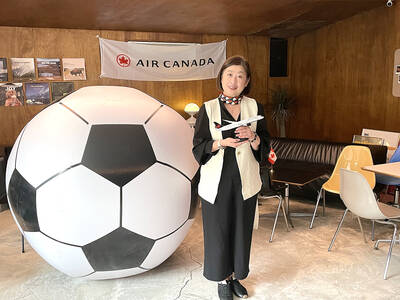
PROMOTION: Travelers who want a free stopover must book their flights with designated travel agents, such as Lion Travel, Holiday Tours, Cola Tour and Life Tours Air Canada yesterday said it is offering Taiwanese travelers who are headed to North America free stopovers if they transit though airports in Japan and South Korea. The promotion was launched in response to a potential rise in demand for flights to North America in June and July next year, when the US, Canada and Mexico are scheduled to jointly host the FIFA World Cup, Air Canada said. Air Canada offers services to 13 of the 16 host cities of the tournament’s soccer games, including Toronto and Vancouver; Mexico City, Guadalajara and Monterrey in Mexico; Atlanta, Georgia; Boston; Dallas; Houston;
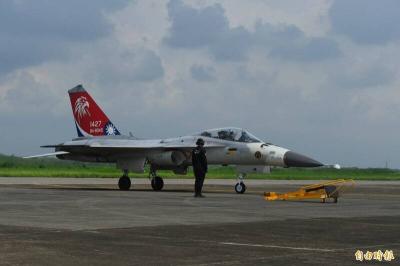
The US approved the possible sale to Taiwan of fighter jet spare and repair parts for US$330 million, the Pentagon said late yesterday, marking the first such potential transaction since US President Donald Trump took office in January. "The proposed sale will improve the recipient's capability to meet current and future threats by maintaining the operational readiness of the recipient's fleet of F-16, C-130," and other aircraft, the Pentagon said in a statement. Trump previously said that Chinese President Xi Jinping (習近平) has told him he would not invade Taiwan while the Republican leader is in office. The announcement of the possible arms